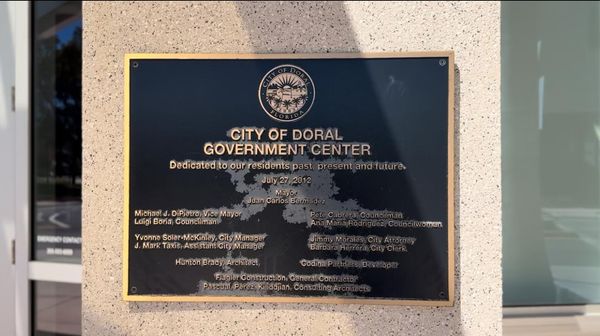
Nestled within the Peak District national park, the stream known as Brook Head Beck meanders between undulating green hills. It is mossy and dank by the river, surrounded by the gentle trickling sound of water, the smell of leaves starting to rot underfoot, and a weave of branches overhead with leaves turning golden in the autumn chill. This place is renowned for its quaint English beauty, and the government has designated it an ecological site of special scientific interest, meaning it holds some of the country’s most precious wildlife.
Yet within this pristine-looking stream flows a concoction of chemicals that could pose a threat to the freshwater organisms and humans who come into contact with it. Recent testing found it had the second highest levels of chemical pollution in the UK – after a site in Glasgow – with concentrations of pharmaceuticals higher than inner-city rivers in London, Belfast, Leeds and York.
New research, published in August in the journal Environmental Toxicology and Chemistry, revealed that England’s most protected rivers – those that run through its national parks – were also heavily contaminated by pharmaceuticals. The findings demonstrated how drug pollution now flows into even the most apparently untouched waterways, with transformative, potentially dangerous results for ecosystems and people.
“I don’t think anyone had really looked for pharmaceuticals in national parks,” says Prof Alistair Boxall, from the University of York and lead author of the paper. “The big new thing we’ve shown is that environments you think are pristine are not.”
Antibiotics and the ‘silent pandemic’
Antidepressants, antibiotics, diabetes treatments and anti-inflammatory drugs are among the chemicals flowing in the water – probably flushed down the toilet by someone in the nearby village of Tideswell. Brook Head Beck had 28 out of 54 pharmaceuticals that Boxall’s team tested for, but the greatest immediate risk to humans is posed by the concentration of antibiotics.
In this stream, antibiotic levels tested higher than those thought to promote antimicrobial resistance (AMR), where bacteria develop resistance to life-saving medicines. “If kids played in here, or animals drank it, it’s possible that they could consume bacteria that have acquired resistance,” says Boxall.
AMR has been called a “silent pandemic” by the World Health Organization. Despite low levels of awareness outside specialist circles, AMR kills more than a million people a year, with numbers expected to increase to 10m deaths a year by 2050, according to the UN Environment Programme.
It is usually not possible to locate the source of antibiotic-resistant bacteria, and many people will not know they have it in their gut. But there is growing evidence that microbes living in waterways and coastal areas may be developing AMR.
In 2018, the University of Exeter’s Beach Bums study was the first to identify water as a source. It found surfers were three times more likely to have antibiotic-resistant bacteria in their gut than people who didn’t spend time in the water.
The study looked at 300 regular surfers and bodyboarders (who are particularly vulnerable because they swallow up to 10 times more water than sea swimmers) and found 9% had AMR bacteria, compared with 3% of the general population. The university’s Poo-Sticks project is now recruiting wild swimmers to see if they have the same issues.
Dr Anne Leonard, from the University of Exeter medical school and lead author of the initial study, said there was an increasing focus on how resistance could be spread through the natural environment. “Antimicrobial resistance has been globally recognised as one of the greatest health challenges of our time … We urgently need to know more about how humans are exposed to these bacteria and how they colonise our guts.”
It is not just swallowing water that puts people at risk; you could ingest AMR bacteria via an open cut, or through contact with ears or eyes.
Prof Trisha Greenhalgh, from the University of Oxford, is a regular wild swimmer. She swims with a full wetsuit all year round because she tends to get scratches that get infected. One in 2022 affected the skin on her lower leg.
“I tried some antibiotic cream I had in the cupboard, then another cream, then saw my GP who prescribed first one antibiotic then a different one. So, all in all, four antibiotics before the infection cleared,” she says. Greenhalgh was never formally tested for antibiotic resistance as it is uncommon to test for it outside hospitals, but says: “It was striking how long it took for the infection to heal.”
How do drugs end up in waterways?
Sewage spills often dominate headlines – they are visible and they smell bad – but invisible microchemicals, including pharmaceuticals, are having an equally serious impact on the ecology of our rivers, says Boxall.
Pharmaceutical pollution from human drugs typically ends up in waterways through the sewage system. When people take a medication, not all of it is absorbed by the body. Between 30% and 90% is excreted from the body then flushed down the toilet to be treated at a sewage plant.
In the UK and many other countries, there is no process to test for pharmaceutical pollution, or to remove it from sewage during treatment. Sewage treatment works are designed to deal with organic waste and are much less effective with chemicals. Boxall says: “Some will be very well removed, some will be removed to some degree, and some will be hardly removed at all. It’s really down to how degradable the pharmaceuticals are.”
We know little about the true extent of drug pollution, and humans are not the only source. More than half of the world’s antibiotics are used on farms and there are significantly fewer studies on their effects, but researchers say intensive agriculture “ploughs the way” for AMR because it involves putting so many chemicals in the soil and into livestock. These pollutants leach into the wider environment, often ending up in rivers. For example, a study in Wisconsin found that seasonal spreading of manure on the fields was linked to the presence of antibiotic resistance genes in rivers.
Previous research by Boxall in 2019 showed that concentrations of antibiotics in some of the world’s rivers exceeded safe levels by up to 300 times, with the most polluted sites found in Asia and Africa.
Antibiotic contamination poses one of the most immediate risks to human health, but many other drugs are flowing out into rivers and seas, where scientists warn they pose a growing threat to wildlife, causing changes to their behaviour and anatomy. In one study, scientists found that European perch lost their fear of predators when exposed to waterborne depression medication. In another, contamination from contraceptive pills caused sex reversal in some fish populations. The problem is widespread: Boxall’s recent study, published in collaboration with the Rivers Trust, found pharmaceuticals at 52 out of 54 locations monitored across England’s 10 national parks.
Why are national parks so contaminated?
While drug pollution is a national and international problem, in England, rivers in national parks are among the most contaminated. It’s a counterintuitive result – and an alarming one, given that these waterways are commonly used by wild swimmers, paddlers and holidaymakers.
The reason Brook Head Beck came to register such high levels of contaminant lies a mile up the road in the village of Tideswell.
Wonky lines of stone houses with small windows, hanging baskets and colourful doors line the streets of Tideswell. The village has been here for more than 1,300 years – names such as harvest cottage, the old wool shop and cobbler’s cottage recall the trades that once flourished here.
“What goes down the drain is telling you about the population,” says Boxall. The drugs in the sample collected downstream from Tideswell included diabetes and blood pressure treatments, typically taken by older people, who generally take more pills. This is one of the reasons national park samples contain so many pharmaceuticals – the average age in England is 39, but people in national parks are on average at least 10 years older.
Another reason is that they are tourist hotspots, and the population swells during weekends in the summer. England’s national parks have a population of about 320,000 permanent residents, but they get an estimated 90 million visitors a year. This puts a strain on wastewater treatment infrastructure, potentially leading to increased levels of pharmaceutical discharge.
Older sewage plants, which are more likely to be serving isolated rural communities, are generally even less efficient. National parks also often have “low flow” rivers, meaning there is less water to dilute the pollutants coming from wastewater treatment plants.
The combination of these factors in remote and fragile places makes national parks particularly vulnerable to waterway pollution.
“The way we monitor and regulate chemicals is stuck in the dark ages,” says Boxall, who says authorities should set “safe levels” for some pharmaceuticals, such as antibiotics. The Environment Agency can’t do anything because the chemicals are not regulated. More intense monitoring is also needed at sites such as Tideswell. “As a society we need to think more about where all the chemicals go,” he says.
Change is under way in Europe. Switzerland is the only country which has updated its sewage works to filter out these chemicals, and following the Swiss example, EU member states and the European parliament have approved the final text requiring sewage treatment works serving 10,000 people or more to have micropollutant treatment in place by 2045. Pharmaceutical and cosmetic producers will largely fund the upgrades in line with the “polluter pays” principle, but the UK government says it has no plans to do the same.
I ask Boxall if he’d swim in any of the rivers in England’s national parks, and he quickly shakes his head. “I wouldn’t go swimming in any UK river, knowing what rubbish is in there,” he says.
Find more age of extinction coverage here, and follow biodiversity reporters Phoebe Weston and Patrick Greenfield on X for all the latest news and features







